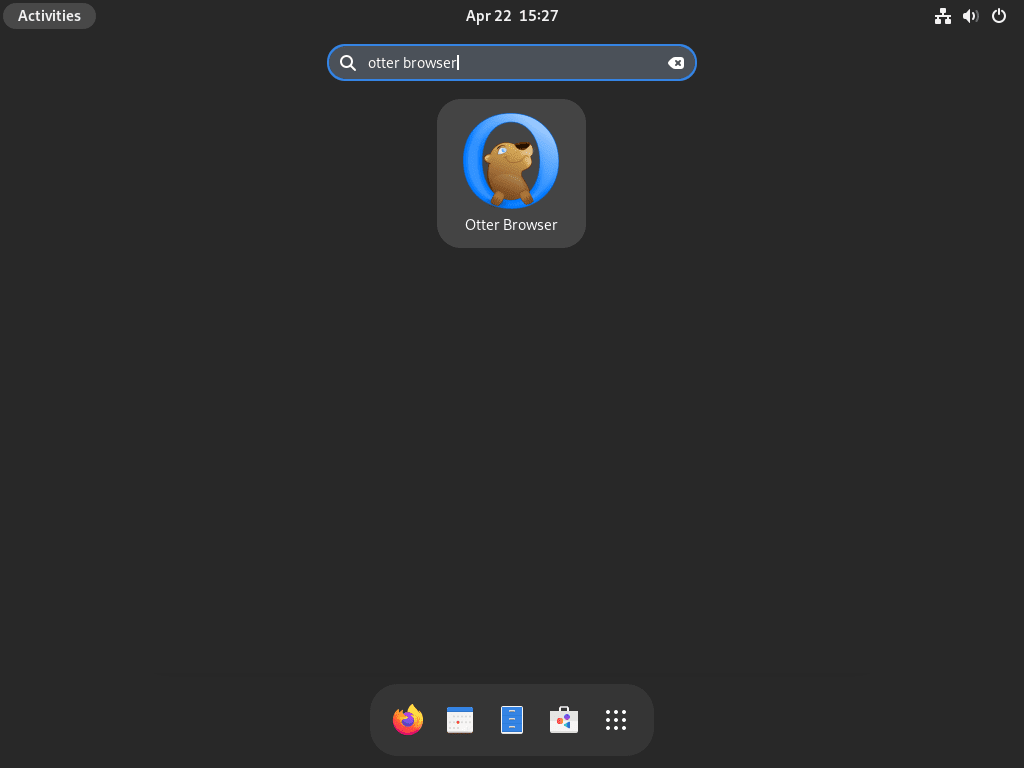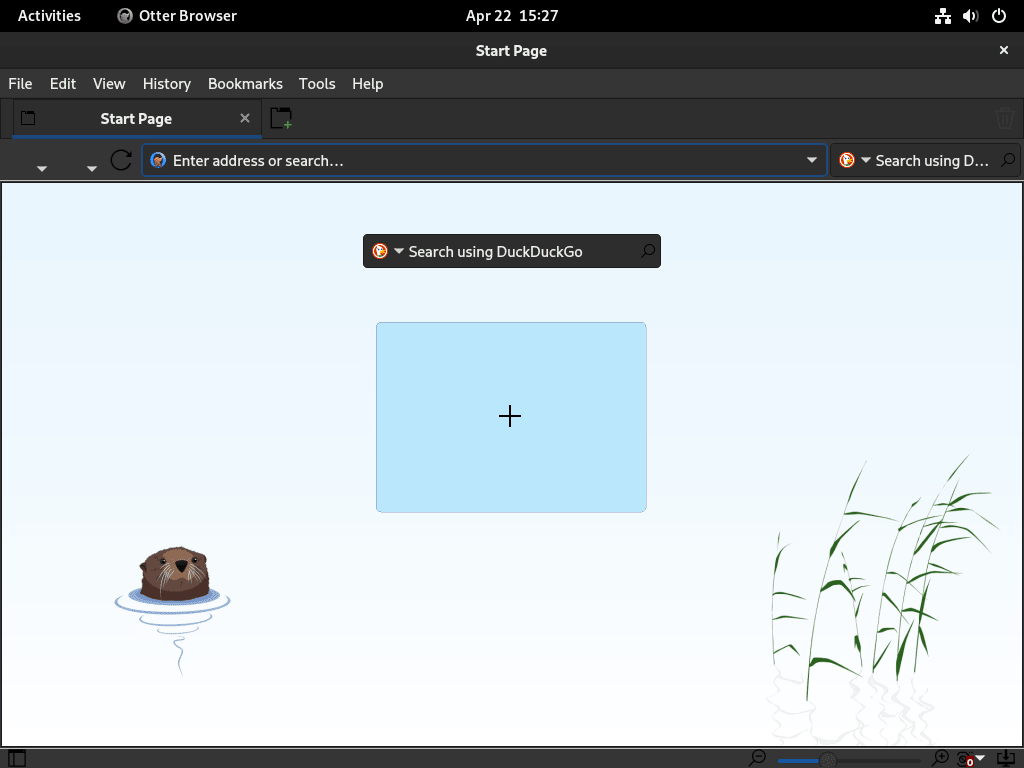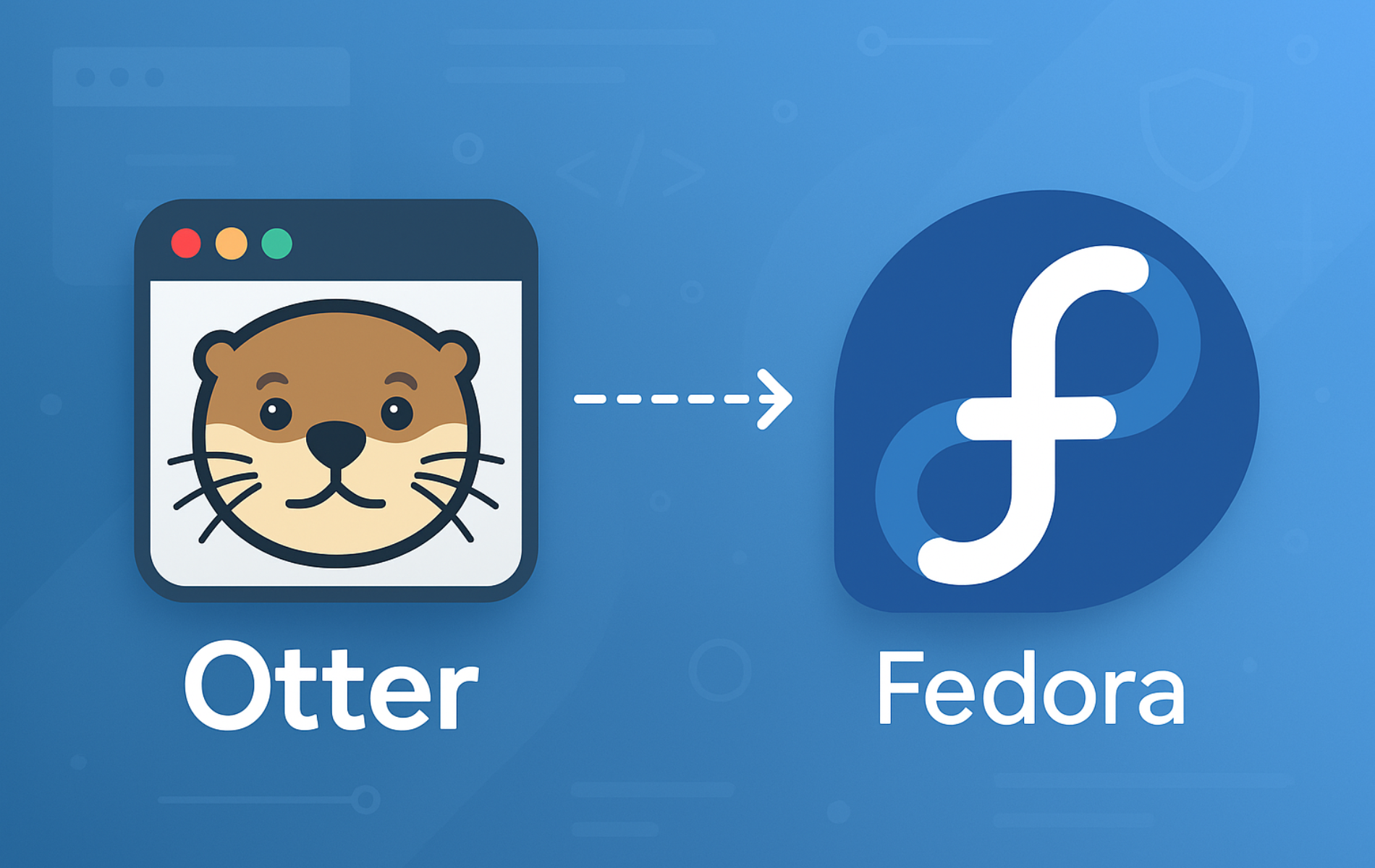Otter Browser recreates the classic Opera 12.x interface that many users preferred before Opera switched to the Chromium engine. If you miss the sidebar panels, customizable toolbars, mouse gestures, and session management from legacy Opera, Otter Browser brings these features to a modern Qt-based browser. By the end of this guide, you will have Otter Browser installed and ready to use on your Fedora system.
Update Fedora Before Otter Browser Installation
First, update your Fedora system to ensure you have the latest package versions. This helps avoid potential conflicts during installation:
sudo dnf upgrade --refreshInstall Otter Browser with DNF
Since Otter Browser is available in Fedora’s default repository, installation requires a single command:
sudo dnf install otter-browserDNF automatically resolves and installs the required Qt5 libraries and other dependencies.
Verify Otter Browser Installation
After the installation completes, verify that Otter Browser is properly installed by querying the RPM database. The rpm -q command checks if a package is installed and displays its version:
rpm -q otter-browserYou should see output similar to the following, confirming the installation:
otter-browser-1.x.x-x.fcXX.x86_64
Launch Otter Browser
With the installation complete, you can launch Otter Browser from the terminal or the desktop environment.
Launch Otter Browser from Terminal
To start Otter Browser from the command line, run:
otter-browserAlternatively, launch it in the background to free up your terminal for other commands by appending an ampersand:
otter-browser &Launch Otter Browser from Applications Menu
Alternatively, search for “Otter Browser” in Activities and click the icon to launch the application.


Manage Otter Browser
Update Otter Browser
Going forward, Otter Browser receives updates through Fedora’s standard package manager. To check for and apply available updates, run:
sudo dnf upgrade --refreshThis command refreshes the package cache and upgrades all installed packages, including Otter Browser if a newer version is available.
Remove Otter Browser
If you decide to uninstall Otter Browser from your system, run:
sudo dnf remove otter-browserNext, remove any orphaned dependencies that were installed alongside Otter Browser:
sudo dnf autoremoveNote that these commands remove the application while preserving your personal configuration and browsing data in ~/.config/otter-browser/. To completely remove all user data, including bookmarks, history, and settings, also delete that directory after uninstalling:
rm -rf ~/.config/otter-browser/Conclusion
At this point, you have Otter Browser installed on Fedora, giving you access to the classic Opera 12.x-style interface with sidebar panels, customizable toolbars, and mouse gestures. From here, explore the Preferences menu to configure content blocking, keyboard shortcuts, and session management. For other browser options on Fedora, see our guides on installing Chromium, Vivaldi, or the modern Opera browser.


I left a comment (regarding the dated verions of this browser) which did appear here with no reply for few days and then, not sure why, it got deleted.
I was curious to know the relevance and safety of this browser having the publicly released versions so old.
Thank you.
Hi Gio,
I apologize for any confusion caused by the missing comments. I was testing out a new comment system, and some messages got lost in the process. I’m sorry for any inconvenience this may have caused.
Regarding the Otter Browser, it is currently up-to-date with version 1.0.03. Although it may seem unusual for a web browser not to have a major release in about two years, the project is still actively maintained. You can view the development history here: GitHub Otter Browser.
The Otter Browser follows more of a long-term support (LTS) model, meaning it doesn’t push code changes frequently unless necessary. This approach ensures stability and reliability for its users. If you are interested, I can provide instructions on how to build and compile the latest version. However, please note that you would need to do this frequently since it would be the daily build, and any changes could potentially cause issues with your browser. The GitHub history shows regular improvements and code clean-ups, which you can check for yourself.
For most systems, the current version should work fine, and if there were a major exploit, I believe it would be patched promptly given the active development. Alternatively, you could try using Pale Moon, another unique browser, if you are concerned about the release timeline.
Thank you.
Thank You Joshua. 🙏